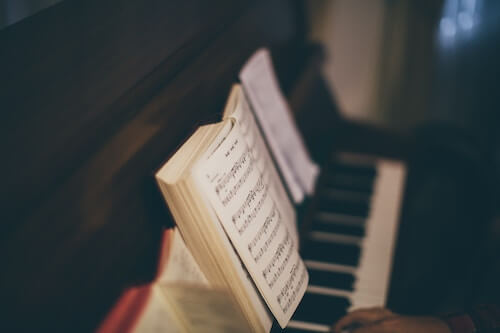In Celebration of Liszt & Verdi

In October we celebrate two giants of the Romantic era. Piano virtuoso, Franz Liszt (October 22, 1811 – July 31, 1886), and opera hit-machine Giuseppe Verdi (October 9, 1813 – January 27, 1901) were both famously known in their time and are still well known today. From blisteringly fast piano solos, to vocal lines demanding almost iron vocal chords, these two composers, respectively, pushed the limits of their genres, thrilling audiences to this day.
Franz Liszt was born in modern day Hungary to a father (Adam Liszt) who worked for the House of Esterházy. Adam personally knew composers Haydn, Hummel, and Beethoven, and would impart his musical knowledge to his young son. Liszt would later study piano with Czerny, Beethoven’s best student. After witnessing an inspiring performance by violin virtuoso Niccoló Paganini in 1832, Liszt set out to accomplish the same unbelievable feats on piano.
Liszt is best known for championing programmatic music, which uses ideas, concepts, and imagery (often from literature or artworks), to create a musical story. This can be related to the modern day concept album found in popular genres. He created the idea of the tone poem, which is a one movement work, again, drawing on programmatic ideas. (See: “Mazeppa”)
Liszt was praised for his transcriptions and arrangements of other composers works, including his own. Here is the piece “Mazeppa” again, but for piano:
And another originally by Paganini:
If you watched even just a few seconds of each video, you can easily see why Liszt was the equivalent of a rock star in his time. His Transcendental Études are some of the hardest pieces of music ever written for piano. Liszt would live to the age of 74, giving piano lessons for free to anyone who earned his interest.
Giuseppe Verdi was born in Le Roncole. This is part of modern day Italy, which politically back then was part of the First French Empire. His parents were innkeepers, and he learned to play keyboards from the local school teacher. At the age of 8, Verdi became the paid organist in his local church. He would climb to recognition by performing and composing for both piano, as well as small and large ensembles.
Verdi would go through a string of tragedies; his wife and two young children died (all from different reasons), and his second opera was a flop. He almost gave up composing, but was convinced by a colleague to persevere. His next opera, Nabucco, was a hit, resulting in an unprecedented 57 performances. While he would achieve world fame afterwards, it’s important to note that in his time there were many critics of his music.
A few stand out operas would be:
La Traviata:
Rigoletto:
Il Trovatore; and Aida. His Requiem, especially the “Dies Irae” movement, is also very well known – it is often used in commercials and movies to this day:
